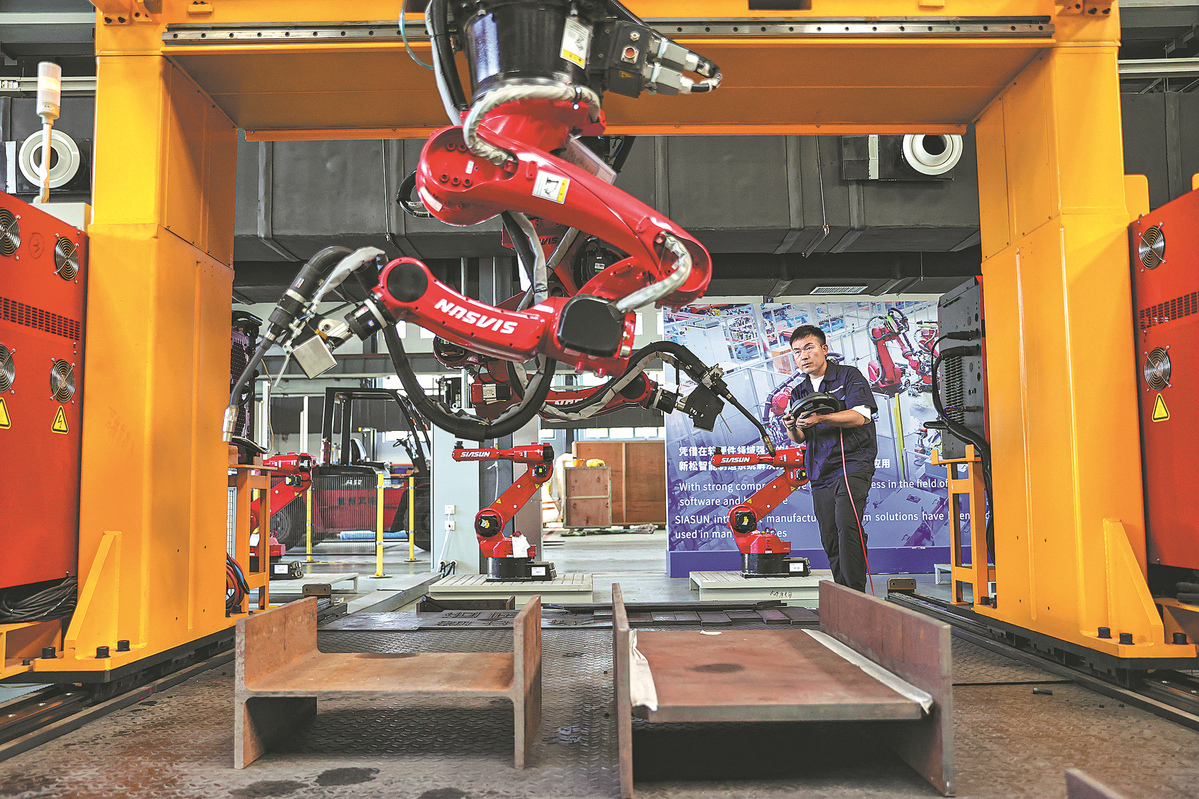Experts call for more efforts in robotics

A Siasun employee conducts tests on a set of robotic arms at a production facility in Shenyang, Liaoning province, in August. [Photo/China Daily]
China should use targeted measures to develop its robotics industry further, focusing on key areas such as cutting-edge foundational technologies, the localization of critical components and enhancing the performance of overall applications, in order to stay competitive beyond its domestic market, said national legislators and industry analysts.
China has become a critical driving force for bolstering the development of the global robotics industry, said Zhang Jin, a deputy to the 14th National People's Congress and president of Liaoning province-based Siasun Robot and Automation Co, one of the largest robotics firms in the country.
The company has made big strides in autonomous robot controllers and validated servo motors and drivers. By demonstrating the capabilities and reliability of domestic industrial robot components, the company is helping to strengthen the country's position in the global robotics market, said Zhang.
Siasun has been conducting research and development of high-speed, high-load and high-precision industrial robot systems, so as to sharpen its competitive edge, Zhang added.
The industrial robot market in China experienced steady growth in 2023, with sales reaching 316,000 units, representing a year-on-year increase of 4.29 percent, according to a report released by the Gaogong Industry Research Institute.
A notable shift in market share between domestic and foreign manufacturers was seen last year. For the first time, domestic industrial robots accounted for more than half of the market, reaching a share of 52.45 percent, according to the report.
China has achieved a significant milestone in the industrial robot industry by developing a complete supply chain and achieving breakthroughs in core components, said Lu Hanchen, director of the institute.
With the ability to control costs, enhance product competitiveness, and foster collaboration between upstream and downstream partners, domestic industrial robot companies are well-positioned to dominate the market, Lu added.
In terms of functionality, domestic brands have shown remarkable progress, and their advantages lie in user-friendliness and the level of intelligence embedded in their products, Zhang said.
He added that hundreds of Siasun's robot models have been sold to over 40 countries and regions, serving more than 3,000 multinational corporations worldwide.
However, a lack of high-end applications is a crucial bottleneck hampering the industry's progress.
High-end applications, such as those in the semiconductor industry, require specialized robots capable of operating in vacuum environments. These robots play a vital role in ensuring the reliability and efficiency of manufacturing processes in sensitive industries, Zhang said.
Liaoning province's role as the cradle of China's robotics industry, coupled with its inherent advantages in academia, research, computing infrastructure and application scenarios, positions it as a stronghold for innovation in the robotics sector, Zhang said.
Going forward, it is imperative to support the establishment of a national technology innovation center in the northeastern region of China, so as to create an ecosystem that fosters collaboration and synergy among different elements of the innovation ecosystem including industry, funding and talent, Zhang added.
Photos
Related Stories
- Futuristic scene of robots taking over backbreaking farm jobs on horizon
- Robots enhance services, efficiency during Spring Festival holiday in China
- Robot assists partial splenectomy surgery in E China's Jiangxi
- Humanoid robots make public debut in Beijing
- Chinese scientists make progress on continuum robot obstacle avoidance
- China develops robot for cultural relics protection
Copyright © 2024 People's Daily Online. All Rights Reserved.









